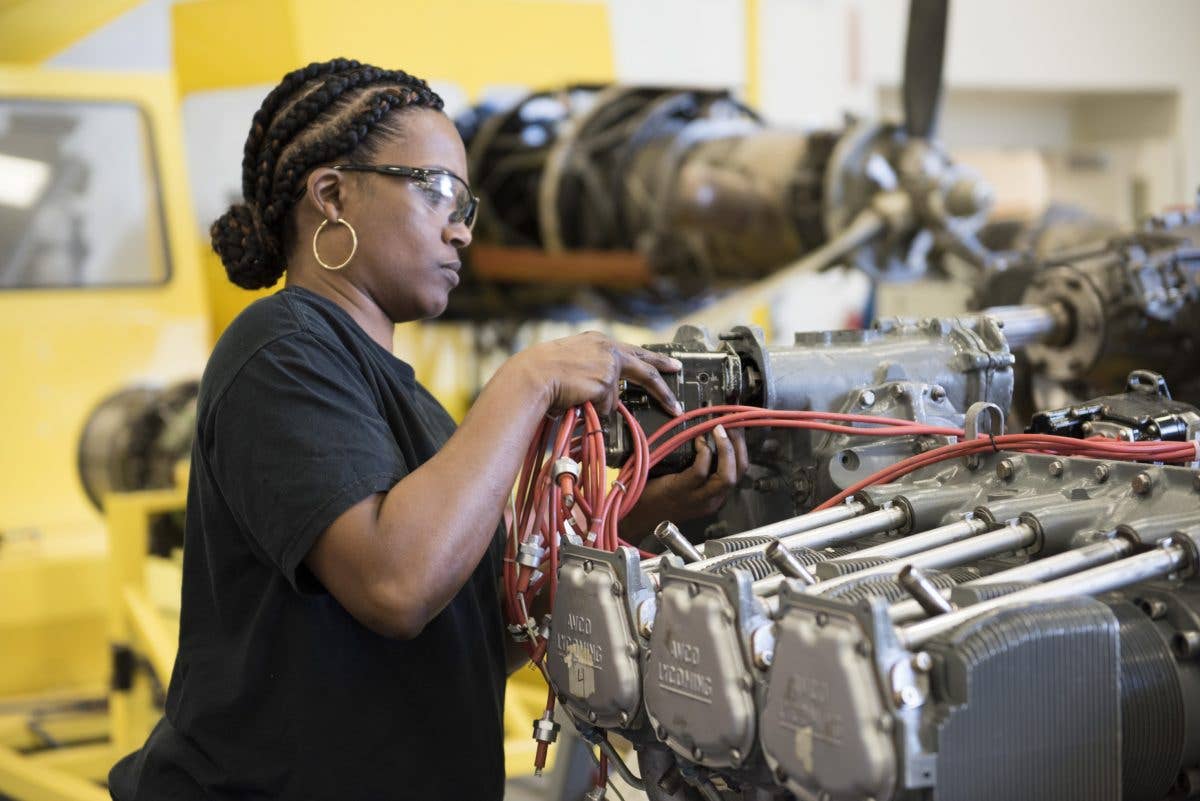How to Become an Airframe & Powerplant Technician
The path to a career as an A&P mechanic involves various training and testing requirements.

Getting your A&P just might be more accessible than you think. [Credit: Abbye Garcia for Rock Valley College]
There is a group of highly skilled professionals who work behind the scenes to ensure the safety of our aircraft. Airframe and powerplant technicians (A&Ps) are responsible for keeping aircraft in safe working condition.
The role of an A&P is a challenging one with diverse job opportunities. Although they will often have a specialization, A&Ps are certified to work on all parts of all types of aircraft, ranging from widebody commercial airliners to small two-seat helicopters.
A&Ps are also sometimes referred to as aircraft mechanics or aviation maintenance technicians (AMTs). They can work for a variety of employers, ranging from flying schools to airlines to aircraft maintenance contractors.
Prospective A&Ps need to obtain a combination of training and skills before they can be certified by the FAA. Here are the four main steps to becoming an airframe and powerplant technician:
Meet the Basic Eligibility Requirements
To be an A&P, you must be at least 18 years old and be able to read, write, speak, and understand English.
- READ MORE: How to Become an Aerospace Engineer
Although you can obtain the technical skills required to be an A&P through training, you should also ensure that you have soft skills that will help you succeed in the field of aviation maintenance. These include strong communication skills and attention to detail.
Gain Formal Training or Experience
The FAA requires prospective A&Ps to meet either a training or experience requirement in order to be certified. There are three ways to meet this requirement:
- Completing the training requirement is the most common option, but also requires you to pay for the program. To meet this requirement, you will need to attend and graduate from an FAA-approved aviation maintenance technician school.
- Those with experience in the military have the option of completing a Joint Service Aviation Maintenance Technician Certification Council training course instead.
- Alternatively, you can complete 18 months of practical work experience with either airframes or powerplants, or 30 months of experience with both systems. Although this option may seem the most practical, entry-level apprenticeships can be hard to come by.
Pass the Required Tests
After meeting the training or experience requirement, a prospective A&P will need to complete the required FAA testing. First, there is a set of three knowledge tests. Once you pass these tests, there is an oral test and a practical test.
Get Certified by the FAA
After completing all the steps listed above, you can obtain your FAA certificate. The A&P certificate has no expiration date and does not require any medical testing.
- READ MORE: How to Become a Thermodynamics Engineer
The FAA certificate actually has two ratings—airframe and powerplant. Most mechanics will obtain both ratings, thereby earning the A&P designation.
FAQs
What is the salary for an airframe and powerplant technician?
According to the Bureau of Labor Statistics, the median salary for aircraft mechanics in 2023 was $75,400. The median annual pay for those working at airlines was $101,500.
Are airframe and powerplant mechanics in high demand?
Yes, there is high demand for A&Ps across the United States and around the world. The Bureau of Labor Statistics anticipates 4 percent growth for aircraft and avionics mechanics through 2032 and aviation training company CAE projects a need for 138,000 AMTs by 2033.
How long does it take to become an airframe and powerplant technician?
The timing depends on which training or experience requirement you choose and how long it takes you to complete the testing. A&P school programs typically range in length from 14 to 24 months.

Sign-up for newsletters & special offers!
Get the latest FLYING stories & special offers delivered directly to your inbox






